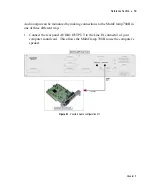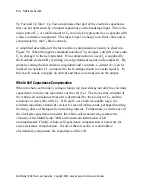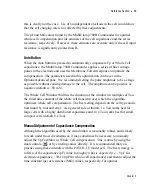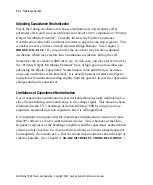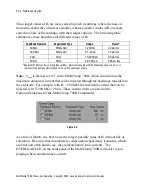
80
•
Reference Section
Cp Fast and Cp Slow. Cp Fast compensates that part of the electrode capacitance
that can be represented by a lumped capacitance at the headstage input. This is the
major part of C
p
. A small amount of C
p
can only be represented as a capacitor with
a series resistance component. This takes longer to charge to its final value and is
compensated by the C
p
Slow controls.
A simplified description of the fast and slow compensation circuitry is shown in
Figure 5.6. When the pipette command potential (V
p
) changes, current I
p
flows into
C
p
to charge it to the new potential. If no compensation is used, I
p
is supplied by
the feedback element (R
f
) resulting in a large transient signal on the output (I). By
properly setting the fast and slow magnitude and
τ
controls, a current (I
C1
) can be
induced in capacitor C1 (connected to the headstage input) to exactly equal I
p
. In
this case R
f
needs to supply no current and there is no transient on the output.
Whole-Cell Capacitance Compensation
When in whole-cell mode, a voltage-clamp step must charge not only the electrode
capacitance, but also the capacitance of the cell (C
m
). The decay time constant of
the whole-cell capacitance transient is determined by the product of C
m
and the
resistance in series (R
s
) with C
m
. If R
s
and C
m
are both reasonably large, the
resultant capacitance transient can last for several milliseconds, perhaps distorting
the rising phase of biologically interesting currents. Furthermore, as in the case of
the electrode capacitance transient, the whole-cell transient may saturate the
circuitry of the MultiClamp 700B or downstream instruments if left
uncompensated. Finally, whole-cell capacitance compensation is necessary for
series resistance compensation. For all of these reasons, it is desirable to
electronically compensate the capacitance of the cell.
MultiClamp 700B Theory and Operation, Copyright 2005 Axon Instruments / Molecular Devices




